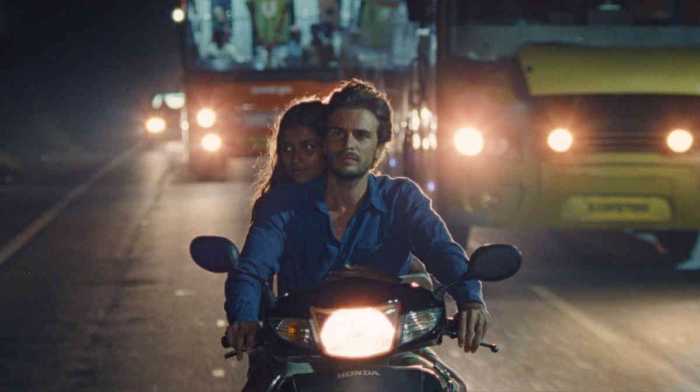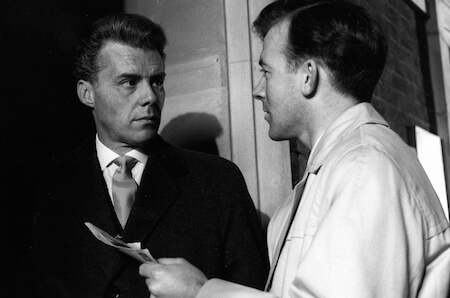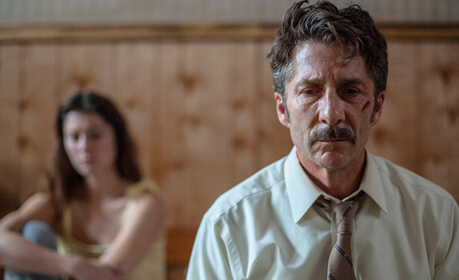The Film Society of Lincoln Center’s “Art of the Real” series is one of three major documentary festivals in New York. Where “Doc-NYC,” held at the IFC Center and SVA, generally embraces more formally conventional work and the MoMA program “Documentary Fortnight” emphasizes its international focus, “Art of the Real” holds a view of non-fiction that includes elements of narrative and avant-garde cinema. For instance, it has shown Narimane Mari’s brilliant but completely fictional “Bloody Beams” (which, to be sure, won the top prize at a documentary festival in Copenhagen).
This year’s lineup looks more politically oriented than usual, with exposés on Korean sweatshops and a look back at Germany’s radical Red Army. However, a film needs an unusual approach to make it into “Art of the Real” — the kind of documentaries usually shown by HBO and PBS, as good as many of them are, wouldn’t make the cut. This year, the festival expands its definition of documentary even further by offering up several programs of shorts by non-narrative filmmaker Bruce Baillie.
“Art of the Real” continues to push the boundaries of documentary
The shadow of the films produced by Harvard’s Sensory Ethnography Lab hangs over Spanish director Mauro Herce’s “Dead Slow Ahead” (Apr. 21, 6:30 p.m.; Francesca Beale Theater), which documents life onboard a cargo ship. Still, there are some significant differences between his film and “Leviathan.” “Dead Slow Ahead” is less frantic — even if it, too, seems excited by shots in which the camera caresses the exteriors of machinery — and more interested in engagement with the ship’s crew. That said, it keeps its distance from them, seemingly aware of the class differences between Herce and the Filipino sailors who toil onboard the ship. Herce uses devices like cutting the sound during a karaoke party and replacing it with loud electronic drones. In fact, the sound design throughout the film is remarkable, combining the natural clanks and creaks of the ship with synthesizer music.
The film has a poetic streak, as it focuses on clouds for long stretches while the ship seems to idle. It contains a sense of dread, as well; we seem a step away from the equally isolated, all-male world of John Carpenter’s “The Thing” much of the time. If there’s a dystopian quality to Herce’s images, as well as plenty of beauty, that’s undoubtedly the point; transporting wheat from the Ukraine to New Orleans by sea involves some risk, a prospect acknowledged in the film’s first subtitled lines of speech.
Brazilian director Sergio Oksman’s “On Football” (Apr. 20, 6:30 p.m.; Francesca Beale Theater) seems aimless and unfocused for its first two thirds and then takes an unexpectedly dark turn that brings its real agenda into the light. Oksman, who’s now based in Madrid, shot the film during a return trip to São Paulo that coincided with the 2014 World Cup. He tried to bond with his estranged father Simao, who left the family when Oksman was a child. Much of their reunion consists of Simao and Sergio driving around in an old car talking about the World Cup and their memories of previous games while a cameraperson appears to lurk in the back seat, filming them. The film relies so heavily on images of people talking in cars that it evokes Abbas Kiarostami’s “Taste of Cherry” and “Ten.”
As one might guess, football is just a pretext to explore father/ son relationships. We don’t learn much about Sergio, but we do discover that Simao is a stressed-out workaholic who can’t afford to live any other way. Even when it succumbs to drift, the film is notable for its handsome cinematography. The final 20 minutes pack an uncommonly sobering punch; Sergio couldn’t have known how his film would end when he began this project.
Italian director Roberto Minervini’s “The Other Side” (Apr. 8, 7 p.m.; Walter Reade Theater) continues his exploration of American subcultures from his “Texas trilogy.” This time, he ventures into a Louisiana bayou world where people hate Obama and love meth. The film runs the risk of European condescension toward poor Americans, most of whom are never going to have a chance to see the film, but it largely dodges that bullet.
The film’s first hour concentrates on junkie lovers Mark and Lisa, whose relationship plays out as Mark hides from the law while his mother dies of cancer. He plans to turn himself in and try to get sober in jail after she finally passes. When this happens, he disappears from the film, and Minervini instead focuses on a militia who claim that martial law is around the corner.
Nobody in the film has anything close to progressive politics — Mark repeatedly refers to Obama by the N word — but the militia leader is a frustrating figure because he offers cogent critiques of American military intervention in the Middle East and drug laws before claiming the UN is going to round up gun owners and send them to “FEMA camps.” Mark and Lisa’s story is filled with a surprising amount of sweetness and tenderness, and there’s even an appealing camaraderie among the militia.
Despite these surprising ambiguities, “The Other Side” helps explain the widespread enthusiasm for Second Amendment libertarianism: its subjects are so alienated from mainstream politics that they see no alternative. It’s frightening to think what a French or Italian TV audience will make of American life after seeing this film.
ART OF THE REAL | Film Society of Lincoln Center, 144-165 W. 65th St. | Apr. 8-21 | filmlinc.org




































